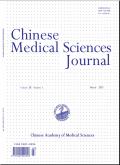Causal Relationships Between Mineralocorticoid Receptor Activation and Tubulointerstitial Nephritis and Lipid Metabolism Dysregulation: A Mendelian Randomization Study
Q2 Medicine
引用次数: 0
Abstract
Objective
To clarify the causal relationship between the level of cytoplasmic unactivated mineralocorticoid receptor (MR) and the development of tubulointerstitial nephritis (TIN), and to evaluate the impact of MR on dyslipidemia, particularly secondary hyperlipemia, in patients with diabetic kidney disease.
Methods
We conducted a two-sample Mendelian randomization study using genome-wide association study (GWAS) summary data. Genetic variants associated with MR levels were selected as exposures, with TIN and lipid profiles [including low-density lipoprotein cholesterol (LDL-C), triglyceride, and high-density lipoprotein cholesterol] as outcomes. A two-step Mendelian randomization approach was used to assess TIN as a mediator, employing inverse variance weighted regression as the primary analysis, supplemented by Mendelian randomization-Egger, weighted median, and sensitivity analyses.
Results
Cytoplasmic unactivated MR level exhibited a significant causal association with a decreased risk of TIN (OR = 0.8598, 95% CI [0.7775 – 0.9508], P < 0.001). Although no significant causal relationship was identified between MR level and secondary hyperlipemia, a potential association of cytoplasmic unactivated MR level with lower LDL-C levels was observed (OR = 0.9901, 95% CI [0.9821–0.9983], P = 0.018). Additionally, TIN exhibited causal links with secondary hyperlipemia (OR = 1.0016, 95% CI [1.0002–1.0029], P = 0.020) and elevated LDL-C (OR = 1.0111, 95% CI [1.0024–1.0199], P = 0.012), particularly LDL-C in European males (OR = 1.0230, 95% CI [1.0103–1.0358], P < 0.001). Inverse Mendelian randomization analysis revealed causal relationships between TIN and genetically predicted triglyceride (OR = 0.7027, 95% CI [0.6189–0.7978], P < 0.001), high-density lipoprotein cholesterol (OR = 1.1247, 95% CI [1.0019–1.2626], P = 0.046), and LDL-C (OR = 0.8423, 95% CI [0.7220–0.9827], P = 0.029). Notably, TIN mediated 16.7% of the causal association between MR and LDL-C levels.
Conclusions
MR plays a critical role in the development of TIN and lipid metabolism, highlighting the potential of MR-antagonists in reducing renal damage and lipid metabolism-associated complications.
矿物皮质激素受体激活与小管间质性肾炎和脂质代谢失调的因果关系:一项孟德尔随机研究
目的探讨胞质未激活矿皮质激素受体(MR)水平与肾小管间质性肾炎(TIN)发生的因果关系,评价MR对糖尿病肾病患者血脂异常特别是继发性高脂血症的影响。方法采用全基因组关联研究(GWAS)汇总数据进行双样本孟德尔随机化研究。选择与MR水平相关的遗传变异作为暴露,以TIN和脂质谱(包括低密度脂蛋白胆固醇(LDL-C)、甘油三酯和高密度脂蛋白胆固醇)作为结果。采用两步孟德尔随机化方法评估TIN作为中介的作用,采用反方差加权回归作为主要分析,辅以孟德尔随机化- egger、加权中位数和敏感性分析。结果胞浆非活化MR水平与TIN风险降低有显著的因果关系(OR = 0.8598, 95% CI [0.7775 ~ 0.9508], P <;0.001)。虽然没有发现MR水平与继发性高脂血症之间存在显著的因果关系,但我们观察到细胞质未激活MR水平与较低的LDL-C水平之间存在潜在的关联(OR = 0.9901, 95% CI [0.9821-0.9983], P = 0.018)。此外,TIN与继发性高脂血症(OR = 1.0016, 95% CI [1.0002-1.0029], P = 0.020)和LDL-C升高(OR = 1.0111, 95% CI [1.0024-1.0199], P = 0.012),尤其是欧洲男性LDL-C升高(OR = 1.0230, 95% CI [1.0103-1.0358], P <;0.001)。反孟德尔随机化分析显示,TIN与遗传预测的甘油三酯之间存在因果关系(OR = 0.7027, 95% CI [0.6189-0.7978], P <;0.001)、高密度脂蛋白胆固醇(OR = 1.1247, 95% CI [1.0019-1.2626], P = 0.046)和LDL-C (OR = 0.8423, 95% CI [0.720 - 0.9827], P = 0.029)。值得注意的是,TIN介导了MR和LDL-C水平之间16.7%的因果关系。结论smr在TIN和脂质代谢的发展中起关键作用,强调mr拮抗剂在减少肾损害和脂质代谢相关并发症方面的潜力。
本文章由计算机程序翻译,如有差异,请以英文原文为准。
求助全文
约1分钟内获得全文
求助全文

 求助内容:
求助内容: 应助结果提醒方式:
应助结果提醒方式:


